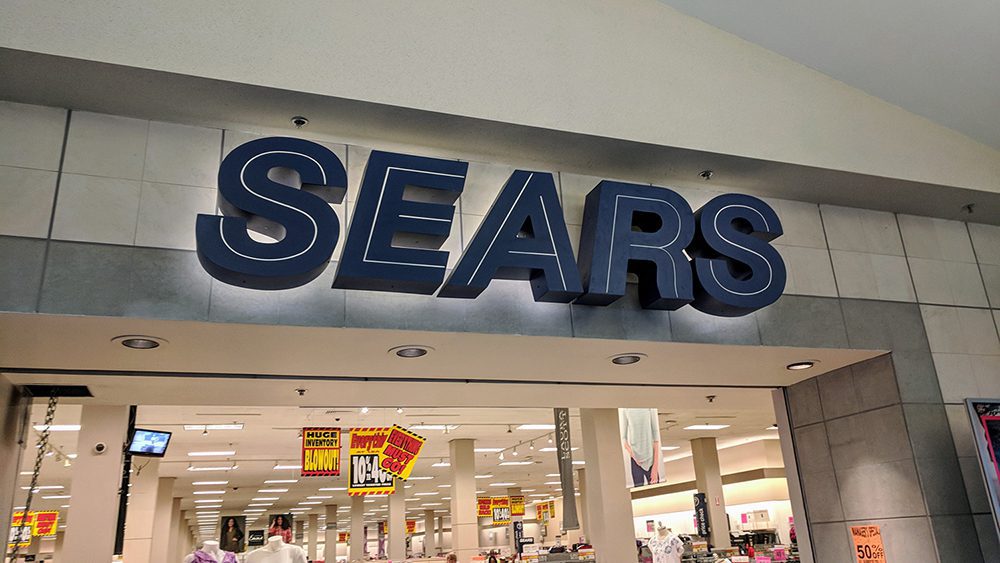My wife Sue and I recently took a trip to the mall. I don’t do very well shopping and we decided a long time ago that if she allows me to go to the mall with her, we’d split up and then meet up after most of her shopping is finished.
On this particular trip, I went on my way and eventually ended up at Sears. Going through the store I could only feel an increasing sense of sorrow. How could such a great institution come to what I was seeing? There seemed to be very little rhyme or reason to what was being carried and I could tell that a lot of stuff had been around for a long time—items no one wanted.
In its heyday, everyone went to Sears to buy Die Hard batteries for their cars or Kenmore appliances for their homes. Guys were proud to have a box full of Craftsman tools. My grandparents, like many of their generation, bought their house from a Sears catalog. Everyone wanted the things Sears had to offer. Now the store is devoid of shoppers and the inventory is dusty and disheveled.
It’s no secret, Sears is in big trouble. In fact, they recently filed for bankruptcy, struggling under deep debt and years of nonexistent profits. It’s a sad state of affairs and I can’t help but ask, what caused this once-great retailer to be in the position it is in today?
I think there is one key issue at the root of Sears’ predicament. They forgot their customers. It seems the retailing giant got more focused on pleasing their shareholders and making their quarterly reports look good to investors. In shifting their focus, they didn’t evolve with the changing needs and wants of their customers. Like so many other companies that have gone by the wayside, they got distracted and rested on their former success. Sears now finds that they are so far behind what customers want that they cannot catch up. This experience had me thinking about the long term care profession and nursing homes in general. To a certain extent, I see our long term care profession going through a challenge quite similar to Sears.
If you are in the market for long term care services you will notice that in many instances there is not much variation or difference from home to home. Of course each has its own culture and each will have its own approach to staffing and décor, but for the most part there is little innovation. Like Sears, the profession seems to be content to continue putting out the same thing they have for the last 30 years. This results in tired facilities that struggle to offer what the consumer is looking for.
To be fair, there are many reasons for this stagnation. Unbelievable regulation, poor government reimbursements, limited competition, and difficulty in staffing are just a few roadblocks to innovation. But probably the biggest factor that keeps our industry from innovating, and the one that few people grasp, is that Medicaid pays for a high percentage of the care delivered in U.S. facilities. This positions Medicaid as the true customer, elbowing out the person receiving the care.
This single fact, that Medicaid has supplanted the nursing home resident, has led to the biggest decline in innovation in facilities today. There simply is no reason to innovate when the one paying the bill is cutting payment and asking for more compliance activity each year. For most nursing homes, getting through the annual Department of Health survey is the focus and in many ways is seen as the singular report card for quality.
This picture needs to change.
There’s a simple way to solve the disconnect between the long term care profession and the people it’s supposed to serve, and that is to put the customer back in the driver’s seat. Maplewood was founded in 1945, long before Medicare and Medicaid, with this central concept and we have never forgotten it. Most facilities were founded in the late 60s and 70s in a response to these government programs and as one can see, they have never strayed from the drum beat of these programs.
This intimate connection has allowed us to pay close attention to the current and future needs of the people we care for. We’re able to innovate better ways of living, to develop more human ways of delivering care, and to constantly improve the lives of our residents and their loved ones.
We couldn’t do these things at The Maplewood if we were tied to the ever-changing direction of state and federal government funding programs. It’s the fact that the majority of our customers pay for their care that puts them in the driver’s seat and allows us to focus on finding better ways to serve them.
I’m seeing consumers embrace this relationship more and more and it’s encouraging. For many years the public perception was that you needed to find a lawyer to help give all your money away and get on Medicaid before entering a facility. The idea was to protect your assets from the nursing home and make sure Medicaid would contribute as much as possible to your needs. But that’s changing. People are realizing that there are costs associated with innovation, modernized operations, higher-quality staff, and more human ways of delivering care. These same people have planned for the possibility they might need care and are starting to vote with their wallets—they want more from their nursing homes and they value these things enough to be willing to pay for them.
Knowing they want more, people are beginning to approach nursing care proactively. They’re purchasing long term care insurance, investing and saving for extended care needs, and working with their financial planners to ensure they will have the resources necessary for the best possible care when the time comes.
Just like big retail brands, or any business for that matter, every nursing facility has their own approach to what they do. Some approaches will be successful and some will not. I’m convinced that facilities that find a way to minimize government payer dominance, keep their customers as their focus, and continue to innovate, and deliver constantly improving services will be the ones that thrive long into the future. In the end, it’s all about making the customer’s life better. The question that nursing homes have to answer is, who is your customer?



